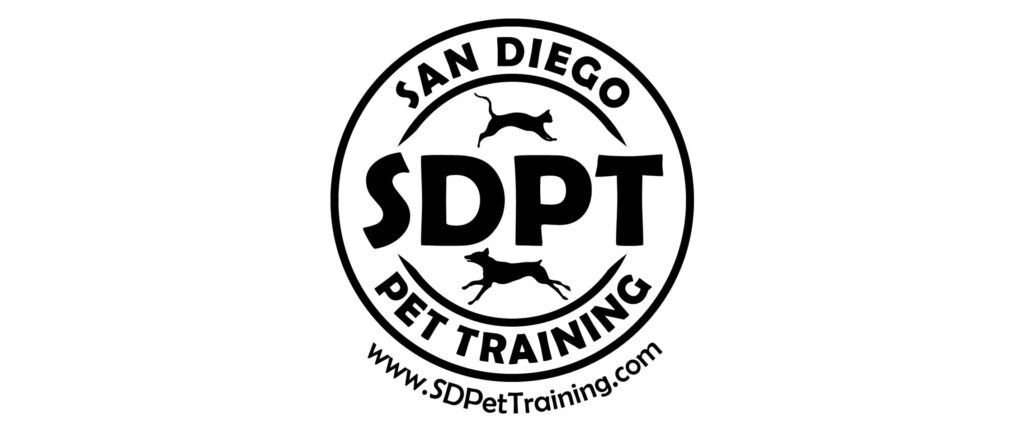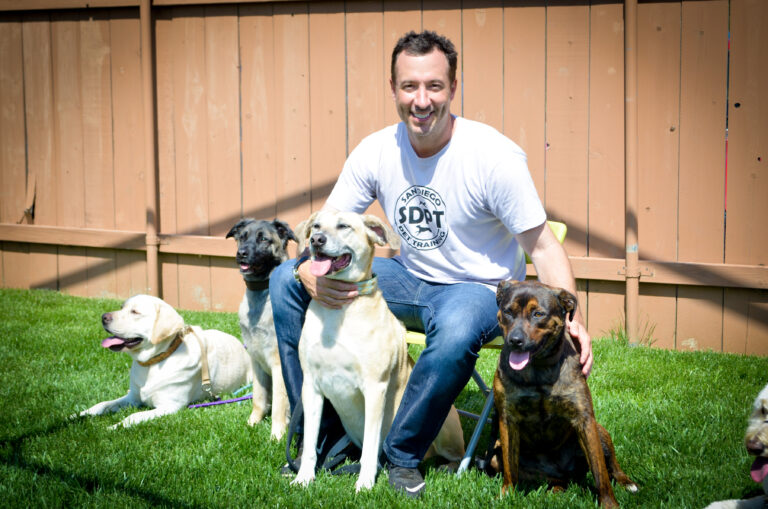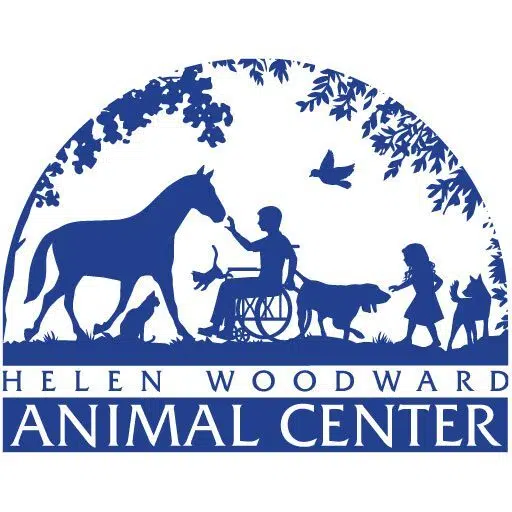Rob Kuty, President and Certified Master Dog Trainer, has been a professional animal trainer for nearly 22 years. He manages all animal training for the Helen Woodward Animal Center and has worked at the Cleveland and Columbus Zoos, SeaWorld Florida and spent several years as the manager of the Pet’s Rule show at SeaWorld San Diego. Rob earned a Bachelor of Arts Degree in Psychology with a minor in Biology from Youngstown State University. His experience includes working with dogs, cats, pigs, pigeons and exotic birds. Rob has made several appearances on the local news, has appeared on the Tonight Show with Jay Leno and was a guest on the Animal Planet’s Faithful Friends television show. Rob is certified by the American Kennel Club to train and test for the Canine Good Citizen, Community Canine and STAR Puppy programs. If you have a specific question for Rob, you can email him here.

San Diego Pet Training

What is basic obedience and why is it important?
Basic obedience is the foundation of a great relationship between you and your dog. It consists of five commands: Heel (where the dog walks next to you on a loose leash), sit, stay, lay down and come (recall). Dogs are pack animals and therefore are looking for a strong leader. Obedience training is a great outlet for you to instill in your best friend, not only the five fundamental commands, but also confidence, respect, focus and a bond that is unconditional and priceless!
What are important tips regarding crate training?
A crate should have enough room for a dog to stand and turn around comfortably. The crate should always be looked at and used as a positive place for your dog. Never leave an animal in a crate during the day for more than four hours. Dogs can stay in a crate overnight. Crate training will help make traveling easier, as well as give you a secure and movable place for your dog in case of emergencies.
How do I introduce my new adopted dog to my resident dog?
First, let the two dogs be introduced in a neutral area. Often, shelters will ask you to bring your current dog for a meet and greet when you are in the adoption process. Next carry that positive momentum in to your home. Make sure to supervise all interactions until they are comfortable around each other. Eliminate food and toys from the equation so that you don’t provoke any kind of jealousy or possessiveness. Letting them interact in open areas like a back yard and going on walks are great ways for them to build a bond. Before you know it they will be well on their way to forming a great team.
What is the best type of communication when teaching and interacting with your best friend?
Dogs read into body language more so than spoken language. Don’t under estimate the power of your touch, motions and energy when communicating with your dog.
My dog barks every time someone passes by my home and it is bothering the neighbors. How can I make the barking stop?
Dogs bark for a reason. A person, mailman or other dog walking by is the perfect opportunity for your dog to signal that something is going on. Because this is a natural behavior for dogs you do not want to suppress this behavior completely. One way you can help this problem is to set more structure in your home with your dog. They likely have too much free time. Contact a professional trainer to come to your home and get you moving forward in the right direction.
How do I get my dog to stop digging in the backyard?
One very successful and easy solution for dogs that like to dig out of boredom is for you to place their own fecal in it. The trick is to simply lay the fecal right on top of the hole and make sure you do it while your dog is not watching. Dogs don’t like to place their paws in fecal and if you are sneaky they will start to think that every time they dig a hole fecal shows up in it. This technique is a great deterrent. They may have to dig several holes before they realize it is not worth the digging.
My dog is having a hard time learning how to go to the bathroom outside. How can I teach my dog not to go to the bathroom in my home?
Dogs learn in the moment. If you are not paying attention to your dog while home or if you are away and your dog is free to roam, you have to expect some accidents. The best option, and this will be challenging but worth the effort, is to always keep an eye on your dog while you are both in the home. You want your dog to make the mistake in the house so you can catch them! Just like people we learn best from our mistakes. While they are in the act of going to the bathroom in your home, immediately interrupt them by moving them outside to the area you do want them to use. If they finish going outside follow up with praise. Your dog will not want to be interrupted while doing their business and soon they will learn the difference on where to go and where not to go. The key to this is consistency. Other tips are to let your dog out for a potty break first thing in the morning, after meals, naps and when you see them sniffing excessively.
My dog pulls when we go on walks. How can I stop the pulling?
Depending on the size of your dog and the handler of the dog, there are different techniques and collars that you can use to assist in the “heel” command. Heel (when the dog walks at your side on a loose leash) is one of five commands taught in a basic obedience course. Enroll in a course where an experienced trainer can assist you with leashes, collars and techniques that will work best for you.
My dog whines and cries every time I leave for work or to run an errand. How can I get my dog to relax when I am away?
Your dog is likely experiencing anxiety because when you leave your dog is longing for your presence. This is typically due to you catering to your dog and feeling that you are making up for lost time when you are with them. Try and teach independence by giving your dog some alone time even when you are around. This way there won’t be such a drastic difference between when you are home or away.
My dog growls and lunges at other dogs when we walk. How can I socialize my dog with other dogs?
When any dog shows aggressive behavior towards another person or animal it is best to seek out a professional animal trainer to evaluate the situation. Animal behavior, including aggression, can be modified but it is best to do it under the supervision of an expert.
For more information or to schedule an appointment for a private
session or group class please contact us at:
www.SDPetTraining.com
619-200-1567 • info@sdpettraining.com

